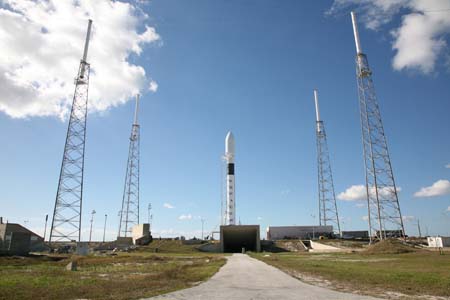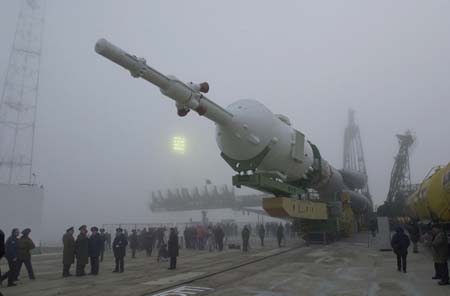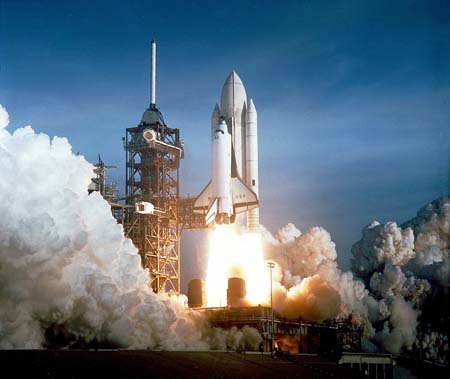Spaceflight Safety: Shuttle vs. Soyuz vs. Falcon 9
The controversial decision to cancel NASA’s Constellation Program
/https://tf-cmsv2-smithsonianmag-media.s3.amazonaws.com/filer/b6/95/b695154b-5383-4b90-b1ce-557d4d8f9920/launch_of_falcon_9_carrying_cassiope.jpg)
But that has invited a debate about safety, and the huge expense of human-rating a rocket for flights to low Earth orbit. Skeptics of commercial human spaceflight say the expense of human-rating will dramatically drive up the costs for companies like SpaceX. The company counters that they've built their Falcon 9, which will make its first flight in two weeks, with human rating standards all along, and that they would add a launch abort system as they move toward flying astronauts. A launch abort system, the long tower above a Soyuz capsule that contains small, powerful rockets to pull the crew away from a failing booster, rode atop all the manned rockets used in the Mercury and Apollo programs (Gemini used ejection seats). The shuttle has never had one, though it had ejection seats on the first four flights, which carried just two astronauts.

Regardless of whether NASA or SpaceX builds the next vehicle to ferry humans to the space station, there will be a gap of several years, during which American astronauts will have to ride on Soyuz. And that has given way to another debate about safety: Will NASA astronauts be less safe going to and from orbit exclusively on Soyuz? This debate, at least, can be properly examined with some firm numbers.

Through the most recent mission, STS-130 in February 2010, the shuttle has taken 788 people to orbit ("people" includes repeat fliers—so Franklin Chang Diaz's seven flights would count as seven people). Fourteen astronauts lost their lives on Challenger and Columbia, which leaves a ratio of one fatality for every 56 people taken to orbit. Soyuz has orbited 250 people, not including two successful aborts: Soyuz 18a in April 1975, which occurred late in a launch 90 miles high, and Soyuz T-10-1 in September 1983, on the launch pad. The program has suffered four fatalities: one on Soyuz 1 in April 1967, and the other three on Soyuz 11 in June 1971. That's one Soyuz fatality for every 63 people delivered to orbit. Based on those ratios, Soyuz is a little safer.
But there's also the number of manned launches: shuttle, 130; Soyuz, 103. Who knows if Soyuz might have a critical failure in the next 27 flights? It's only fair, however, to point out that Soyuz hasn't had a fatality in almost 29 years. Maybe they've worked out the kinks.
Some of the Russian rocket's safety rating is due simply to the existence of its launch abort system. The shuttle, by contrast, beginning with STS-5, and continuing through the Challenger disaster, the 25th flight, offered no escape for the crew once the solid rocket boosters were lit. After Challenger, a telescoping slide pole was installed in the mid-deck that requires each astronaut to unbuckle from the seat, attach a ring to the pole, and dive out the side hatch for a parachute descent. The orbiter would have to be in a controlled glide below 50,000 feet and traveling slower than 230 miles an hour.
Finally, NASA astronauts have been riding Soyuz since Norm Thagard's flight in 1995, and relied on it exclusively for 30 months after the Columbia tragedy. Adding the 32 months that the shuttle was grounded after the Challenger tragedy, the shuttle has been out of service due to fatal safety problems for more than five years out of its 29-year life.

No matter how much careful engineering and modeling went into the design of the shuttle—and few deny that it performs beautifully despite its complexity—the decision to put men on it the first time it flew may have revealed some NASA hubris. STS-1 encountered many issues such as tiles that separated from the orbiter and different flying characteristics at high speed than those predicted by computer models. Most worrisome, an overpressure wave from the solid rocket booster ignition pushed the orbiter's body flap below the main engines past a threshold at which engineers would have expected damage to the vehicle's hydraulic system, and would have made reentry impossible. The crew didn't know about this until after the flight. Upon learning of it, commander John Young, according to space historian James Oberg, said: "I'd have ridden the vehicle up to a safe altitude, and while still in the ejection envelope I'd have pulled the ring." On its inaugural launch, Columbia would have gone to the bottom of the Atlantic.
So important questions remain: Who, in the coming years of human spaceflight, will be the arbiter of safety? What criteria will they use? How soon will they allow astronauts to ride a new rocket? And when a commercial operator suffers a fatality—which will happen eventually—will the government shut down commercial human spaceflight? Or will the government acknowledge, as it did after the Apollo 1 fire, and after Challenger and Columbia, that human spaceflight is a dangerous business, but that it must continue?